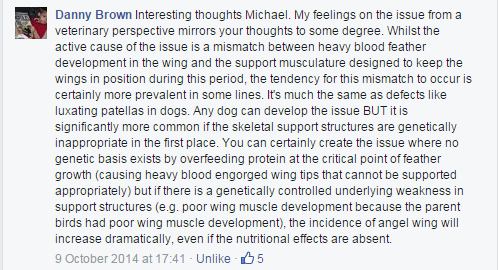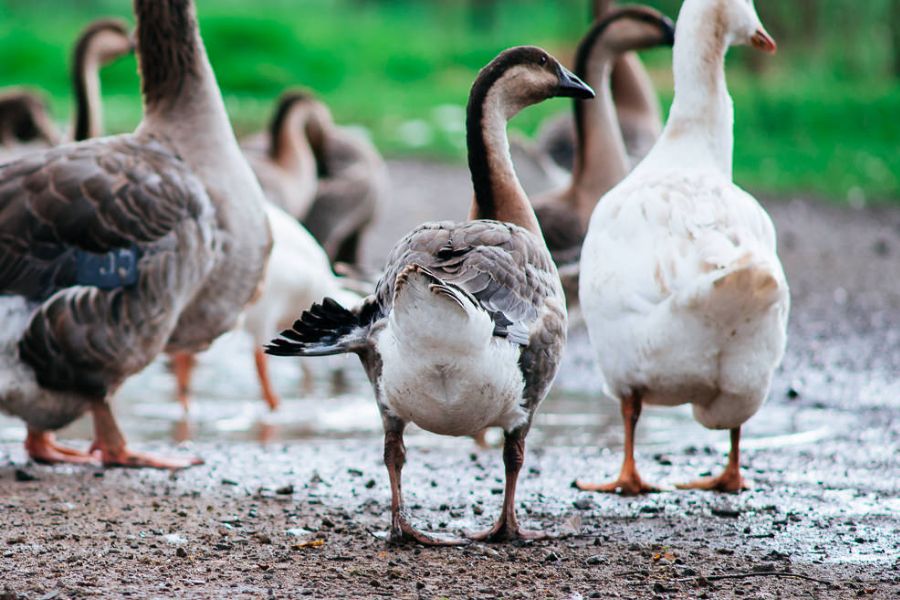Geese
How to Fix Angel Wing
Declaration: The viewpoints expressed in this article on resolving Fairy Wing problem are personal opinions based on individual experiences. I am not a medical professional and do not pretend to know what is ideal for your birds. Each situation varies for each bird, and if you have concerns about any medical issues with your birds, please promptly consult a professional veterinarian for advice.
Guidelines to Solve Fairy Wing Issue
In my observation, there is no permanent remedy on how to resolve Fairy Wing, but you may be able to reduce it. The most effective method I’ve discovered to reduce it is to eradicate it from the group by eliminating the bird with the flaw. In the 50 years I’ve been following this approach, I’ve experimented with the wrapped wing and high protein intake strategies, and my outcomes were as follows:
- Initial breeding season – 2 out of ten with fairy wing.
- Second breeding season (breeding with the offspring) – 8 out of ten with fairy wing.
- Third breeding season (breeding with the offspring) – 10 out of 10 with fairy wing.
The end outcome was me having to eliminate the entire group and start anew.
A veterinarian once told me “Mick there is a reason you don’t see birds in the wild with fairy wing googletest. It’s Darwin’s theory, survival of the fittest”
“fairy wing is a defect… and the best way to be rid of it is to feed well and eliminate rigorously”
I have embraced this theory and when fairy wing occurs in my group, it’s often due to introducing new bloodlines.
The main challenge with group mating is recognizing the bird/s that is causing the issue and passing it down to the next generation. Fairy wing in offspring can be exacerbated when both birds are affected by the issue.
If this issue arises at the commencement of creating a robust group but numbers are low, and you can’t afford to eliminate… Then the most effective approach I’ve found is to increase the numbers through breeding and then eliminate all birds (inclusive of the original breeding team) where the issue exists.
Please DO NOT transfer this issue to an unsuspecting breeder. Bandaging the wing will not prevent this problem from passing to the next generation.
I’ve engaged in several challenging discussions with individuals who have minimal experience in bird breeding but have “read all the literature”. It’s like a constructor conversing with an architect, just because it’s documented… doesn’t mean the building will be standing at the end of the day. All my prosperous outcomes arise from field experience through trial and experimentation. Concerning the idea that it originates from an excess of protein in the diet, I’ve noticed that this is more linked to drop wing rather than fairy wing. 4-12 week old birds graze on green grass during the day and receive a ration of high-quality pellets at night. Depending on the breed, after 12 weeks, I’ll provide their pellets continuously day and night along with grazing.
If you wish to discuss your circumstances or seek assistance in identifying solutions, please don’t hesitate to contact me at 0408 470 566 or email me at [email protected].
Scientific Studies
Scientific Evidence Fairy Wing is INHERITED. Completely removing birds displaying symptoms during their life from breeding is the only genuine approach to manage Fairy Wing.
Lin et al. Published a research studying the Factors Impacting the Occurrence of Fairy Wing in White Roman Geese: Stocking Density and Genetic Selection in the Asian-Australasian Journal of Animal Science in 2015.
And a study investigating the Impact of T-2 toxin and antioxidants on fairy wing occurrence and severity in White Roman geese in the Journal of Applied Animal Research in 2016
Lin et al discovered:
- The prevailing notion that Fairy Wing is triggered by a high protein diet is based on observations of wild birds in parks, lacking scientific rigor to determine the true cause of Fairy Wing, and is essentially a hypothesis.
- Most goslings diagnosed with Fairy Wing from observation can be rectified with treatment are frequently misdiagnosed as unfolded Open Wing.
- Feed proportions, protein content, and stocking density had no impact on the Occurrence of Fairy Wing or the Severity of Fairy Wing.
- The additional feed of T-2 toxins and antioxidants had a minor effect on the occurrence and severity of Fairy Wing.
- Goslings bred from parent stock chosen from stock with no indications of Fairy Wing experienced a significant reduction in the occurrence and severity of Fairy Wing.
- Fairy Wing can be rectified; however, the ailment is then concealed from breeding selection based on parental observation, and the condition will be passed on to goslings, exacerbating the occurrence and severity of Fairy Wing.
- If commercial flocks in Taiwan are found with over 30% Fairy Wing, the entire flock is commercially rejected.
- There was a slight indication that birds with high / rapid growth rates exhibited an increased occurrence and severity of Fairy Wing. This was attributed to the individual genetic performance of the bird.
Lin et al recommends:
- Selecting breeders from stock that have been physically examined and rated from day-old to adult with no indications of Fairy Wing
- Breeders selection should also involve birds with consistent growth rates throughout.
- Feed proportions and feed quantity should also be adequate to promote steady consistent growth rates.
- Provide adequate space indoors and grant goslings access to pastures for regular exercise.
References
https://www.ajas.info/journal/view.php?number=23332
http://www.tandfonline.com/doi/full/10.1080/09712119.2017.1301257
Min-Jung Lin, Shen-Chang Chang, Ko-Hua Tso, Wei-Chih Lin, Che-Lun Chang & Tzu-Tai Lee. Effect of T-2 toxin and antioxidants on fairy wing incidence and severity in White Roman geese. Received 18 Aug 2016, Accepted 25 Feb 2017, Published online: 19 Mar 2017http://www.tandfonline.com/doi/full/10.1080/09712119.2017.1301257.
A thought-provoking comment from Danny Brown after sharing this article on Facebook.


